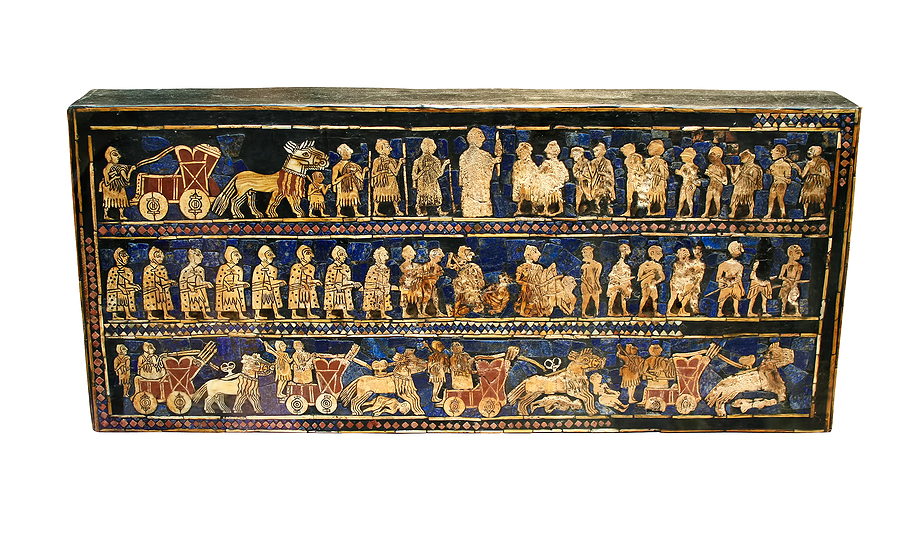Related Flashcards
Related Topics
Cards In This Set
| Front | Back |
 What is it? |
Great stone tower, Jericho,8,000-7,000 B.C., neolithic period,present day Turkey, near the oldest known settlement, domestication of animals,served as protection against nomads, 5ft. thick, 13ft. high,giant tower on it, beginning of architecture, technological advancement, ability to organize a workforce, don't know if there were multiple or one tower or exactly what purpose it served
|
|
Landscape with Volcano(?)
|
Catal Huyuk,6150 B.C. first city, landscape thought by early archeologists to be first existing landscape showing(shown for setting--no narrative), shows 10,000ft. hasan Dag in view of city, volcano erupting, devoid of humans and animals, prosperity well ordered society,neolithic revolution, visual code, visual symbolism,
|
|
White temple and ziggurat
|
Uruk, 3200-3000 B.C. Mesopotoamia, first civilizatipn, written language, probably dedicated to Anu, skygod,built higher up to be closer to the gods, city within city, business and officialities transpired as well as worship, not just foundation shown, whitewashed walls, stairway to top, bent-axis-plan(as opposed to Egyptian temples)
|
 What is it? |
12 Mesopotamian votive statuette from abu temple, 2700 B.C., early dynastic sumer inlaid eyes, shows sheepskin that people wore, represent worshippers, wide eyes represent perpetual wakefulness, put in place of the worshipper, hold beakers used to pour sacrifces to the gods, gypsum and earliest examples of plaster of paris technique, some have names of donor or prayers, employ cones and cylanders
|
|
Head of Inanna or "Female Head"
|
From Uruk, 3200-3000, originally inlid eyes and gold leaf wig, imported marble, costly, protoliterate sumer,face with flat back, holes to attach rest of the head and body(wood), example of representational accuracy at early age.
|
 What is it? |
Standard of Ur, early Dynastic sumer, 2600 B.C., home to Abraham, rectangular box with sloping sides, lapis lazuli, shell and limestone, war side, peace side or narrative reads from left to right, victory celebration or banquet connected with cult ritual,early historical narrative,
|
|
None
|
None
|







